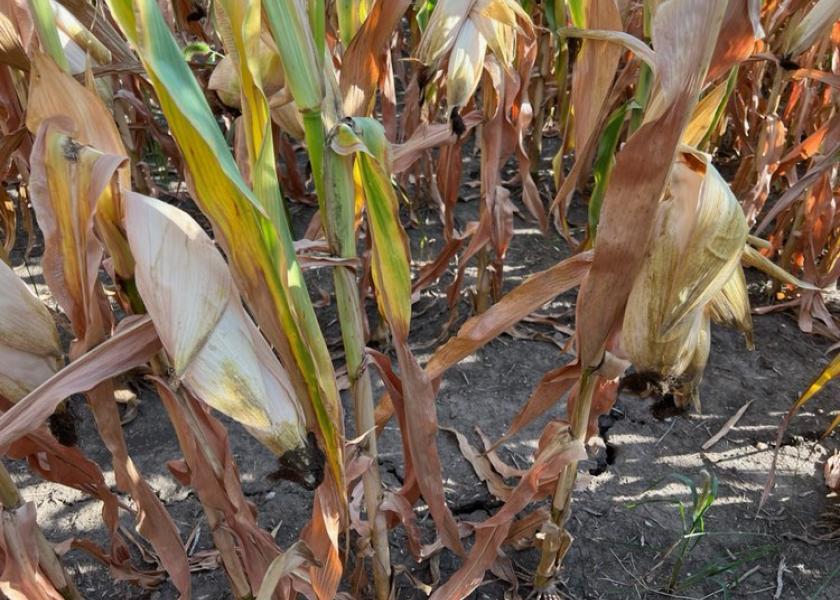30 Days Left for Iowa Corn Crop to Complete Fill, Pack On Yield

Before Thursday is over, Pro Farmer Crop Tour scouts will have evaluated corn and soybean crops in every single one of the 99 counties in Iowa this week.
What scouts are finding are what Pioneer agronomist Jim Lafrenz describes as highly variable crops, showing wide swings in performance depending on their location within the state.
“I think this might be the most complicated time of the season, as we're looking at yield estimates trying to understand the productivity in the crops,” he tells Farm Journal’s Tyne Morgan. “It’s dynamic; we still have 30 days of fill left in a lot of corn hybrids, and it’s a similar situation in soybeans.”
Uneven Corn Emergence Costs 5% To 9% In Yield
The season started out tough for Iowa’s farmers, many of whom planted over a 40-day period of fitful starts and stops before getting all their fields seeded.
The tough start resulted in corn that didn’t achieve the much-desired picket fence pattern corn growers want to achieve to optimize yield potential.
An uneven corn crop means growers can count on a 5% to 9% yield loss just because of the uneven emergence. And the season has continued with weather ups and downs ever since.
I’ve got a solid corn crop in some areas, and I've got some areas that are very droughty with 150 bu. and less yield potential on some very good soils that have had very little rain,” Lafrenz says.
Roger Cerven, a farmer from Stanton, Iowa, says the region’s spotty rains have made for drastic differences in his cornfields this season.
“We will have farms that will do 140 bu. and farms that will pull 200. If we end up in that 170-bu. range, it’s a win,” Cerven says.
Soybeans Tell A Similar Story
Soybeans across most of Iowa are at R5 going into R6 and need more moisture to pack bigger seeds in the pods. “We won’t lose pods so much now, but we’ll lose bean size. That’s really what the penalty will be,” Lafrenz says.
He estimates that some parts of Iowa have received only 50% to 60% of their normal precipitation.
“In southeast Iowa farmers have seen only 9” to 10” of rain until now, and they’re short that much as well,” Lafrenz says.
“Respiration is taking more energy from the plants. We’re in day four of these high temperatures, and they’re not ideal for fill – corn and soybeans don’t like 95-degree temperatures,” he adds.
But the bigger concern is what he doesn’t see coming on the horizon: rain.
As soybeans go through the seed-fill process, their size is determined and water demand is at its highest point, according to Matt Duesterhaus, Crop-Tech Consulting research agronomist for west-central Illinois and northeast Missouri. He says a soybean crop needs 6" to 7" of water at the beginning of R5 for good seed fill.
“This is why soil moisture in August and those August rains are so crucial,” Duesterhaus says. “Likewise, if your crop is under irrigation, be prepared to meet its water demands.”
Pro Farmer Crop Tour, Day 3: Heat and Stress Take a Toll on Corn in Iowa and Illinois
Want to Take More Beans to the Bin at Harvest? Pay Attention to Soybean Growth Stages
Midwest Crops Swelter In High Temperatures, Little Relief Ahead







